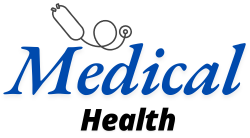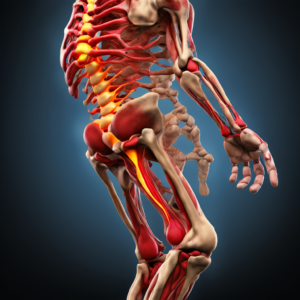So, this hypertension thing, they call it high blood pressure.
It’s like your blood’s got too much push, banging against your pipes, like a garden hose about to blow. Not a good scene.
It ain’t a one-time thing either, this pressure’s always there, working silently, a real pain in the neck.
Millions got it, a worldwide club, but nobody wants to join.
It’s your heart’s way of saying, “Hey, pay attention.”
They measure it with two numbers, like a fraction. 120 over 80, that’s the sweet spot. Anything above 130 over 80, that’s trouble brewing. Here’s how it breaks down:
- Normal: Under 120/80. Good job.
- Elevated: 120-129 over less than 80. Keep an eye on it.
- Stage 1: 130-139 over 80-89. Time to get serious.
- Stage 2: 140 or higher over 90 or higher. Houston, we have a problem.
These ain’t just numbers, they’re the pressure your veins are feeling.
Hypertension, that sneaky devil, works without making a peep. Weakens your arteries, leads to blockages.
Your heart has to work harder, and it can just quit on you. No small thing, this. Look what it can do:
- Heart: Big heart, busted heart, clogged heart, heart attack. Not a good hand to be dealt.
- Brain: Stroke, forgetfulness, slow thinking. Nobody wants to be slow.
- Kidneys: Sick kidneys, failed kidneys. You need those.
- Eyes: Damaged eyes, can’t see. You need those too.
- Arteries: Blocked pipes, balloons popping. Just bad news.
It’s a silent killer because you usually don’t feel it.
Best defense is to keep an eye on it, regular checkups are important, and if you wait for the signs, it might be too late.
It ain’t random either, a mix of things, some you can’t control. Like getting older, your pipes lose some give. Family history, blame your folks.
And some groups, like African Americans, get it more often. But don’t throw in the towel yet.
How you eat and live, that’s where you can make a difference.
Too much salt, bad fats, junk food, that’ll send your pressure sky high.
Being overweight, sitting around all day, stress, and not sleeping, are all bad for you.
And things like diabetes and kidney problems, they make it worse.
Gotta keep tabs on your blood pressure, can’t fix what you don’t know.
Home monitoring lets you check it in your easy chair.
Make sure you’re relaxed, sitting straight, feet on the floor, arm at heart level.
Wrap the cuff, take a few readings, a minute apart, and write it down. Do it the same way each time.
Tracking it helps you see what’s working, and helps your doctor too.
Lifestyle changes, they’re big.
The DASH diet, it’s all about real food: fruits, veggies, lean meats, low-fat dairy, stay away from salt, bad fats, and sweets.
Stay active, get some exercise, quit smoking, and easy on the booze, all that jazz.
And try to relax, take a deep breath, maybe even manage that weight.
Sometimes, you need some pills. Not a sign of failure, just another tool.
Water pills, they help your kidneys, other pills relax your veins or slow your heart.
Talk to your doctor, watch out for side effects, important stuff.
Living with this pressure thing, it takes work.
Gotta keep at it, stay involved in your own care, regular checkups, check your numbers at home, get some help if you need it, and keep going. It’s not the end, it’s a chance to take charge. So, take it.
What Exactly is Hypertension?
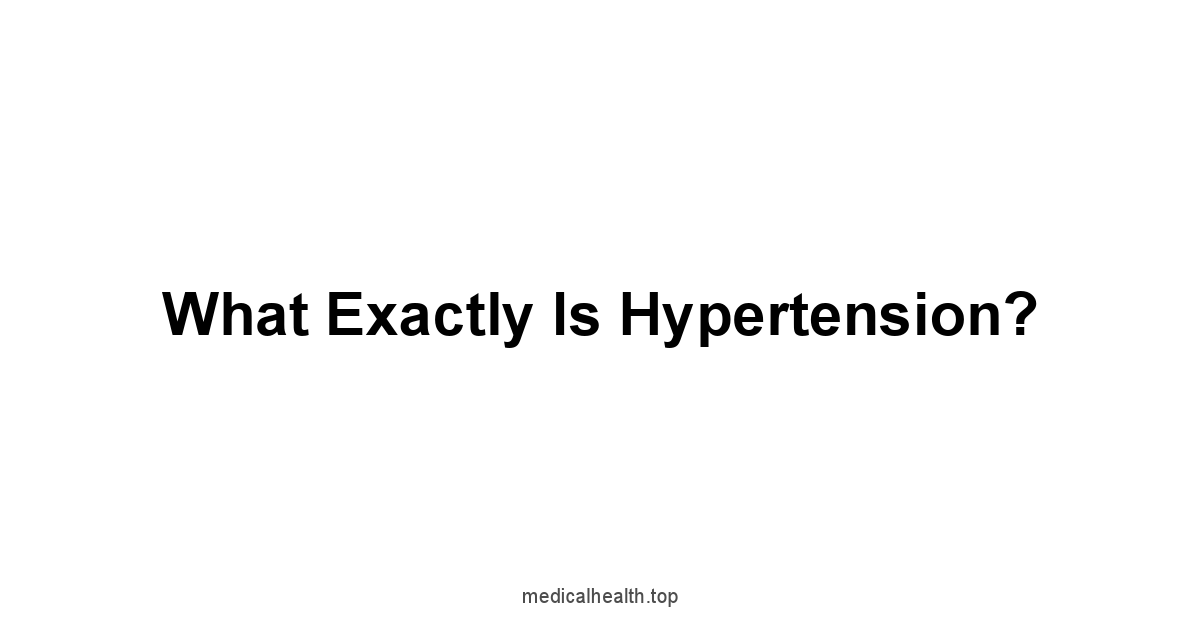
Hypertension. High blood pressure.
It’s a common term, but what does it really mean? It’s not just about feeling stressed or being a bit wound up.
It’s a persistent condition where the force of your blood against your artery walls is too high. Think of it like a garden hose.
If the water pressure is too strong, the hose might bulge, weaken, or even burst. The same can happen to your arteries. This isn’t something to take lightly.
It’s a condition that creeps up silently, often without any dramatic symptoms, but it’s constantly working, putting strain on your heart and blood vessels.
Understanding it is the first step to managing it.
It’s not something that just goes away, it requires constant attention and effort to keep it under control.
It affects millions around the globe, making it a public health concern, that you can take steps to address and keep your heart healthy.
It’s not a death sentence, but it’s a clear signal you need to make some changes and take care of yourself.
The Numbers: Systolic and Diastolic Pressure
Blood pressure is measured with two numbers, like a fraction. The top number is systolic pressure.
That’s the pressure when your heart beats and pushes blood out. The bottom number is diastolic pressure. That’s when your heart relaxes between beats. Both numbers are important.
A normal blood pressure is considered to be around 120/80 mmHg.
But anything above 130/80 mmHg is usually seen as high blood pressure, which means you need to pay attention.
It is not a pass or fail, but a range that needs to be monitored.
Here’s a breakdown:
- Normal: Less than 120/80 mmHg
- Elevated: 120-129 systolic and less than 80 diastolic
- Stage 1 Hypertension: 130-139 systolic or 80-89 diastolic
- Stage 2 Hypertension: 140 or higher systolic or 90 or higher diastolic
These numbers are not set in stone, they are guidelines.
Your doctor will consider your overall health when determining what is best for you.
Remember these numbers aren’t just abstract measurements, they reflect the pressure your blood vessels are constantly experiencing.
Understanding these numbers can empower you to take control of your health.
High blood pressure puts a strain on your entire system, and ignoring it can have serious consequences.
How High Blood Pressure Damages Your Body
High blood pressure is a silent attacker.
It doesn’t always announce its presence with clear symptoms, but it’s steadily doing harm. Think of your arteries like plumbing.
When the pressure is too high, the pipes can get damaged, weak, and inflexible.
This can lead to plaque buildup, a condition called atherosclerosis, which narrows your arteries and restricts blood flow.
The heart, which has to work harder to pump blood against this resistance, can enlarge and weaken over time, leading to heart failure.
Here are some key ways hypertension damages your body:
- Heart: Enlarged heart, heart failure, coronary artery disease, heart attack
- Brain: Stroke, dementia, cognitive decline
- Kidneys: Kidney disease, kidney failure
- Eyes: Damage to blood vessels in the retina, vision loss
- Arteries: Atherosclerosis, aneurysm
It’s a chain reaction of trouble, starting with high pressure and leading to serious and potentially life-threatening conditions.
It’s not just one isolated problem but rather a systemic issue affecting all of your organs.
These are not minor inconveniences, they are severe health threats that can dramatically impact your quality of life and longevity.
It’s like letting a leaky faucet go unrepaired—eventually, it’s going to cause major problems.
Why it’s Called the Silent Killer
It earns the nickname “the silent killer” for a reason. It often has no obvious symptoms.
You might feel fine, but all the while, the pressure is silently building, damaging your arteries, heart, brain, and kidneys.
People often discover they have high blood pressure during a routine checkup or when a serious health problem arises.
This is the danger – the absence of obvious symptoms lulls you into a false sense of security.
It doesn’t make it less dangerous, it makes it more so.
Here are a few reasons why it’s hard to detect:
- Lack of Obvious Symptoms: Most people don’t feel high blood pressure, leading them to believe they’re healthy.
- Gradual Onset: The pressure increases slowly, so you don’t notice the change.
- Misinterpretation of Symptoms: Some symptoms like headaches and fatigue could be attributed to other factors, masking the real issue.
This lack of immediate feedback is precisely why regular blood pressure monitoring is vital.
Don’t wait for a crisis to realize something is wrong.
By the time symptoms appear, significant damage may have already occurred.
The silence is deceptive, but with vigilance and attention, you can break this silence and protect yourself.
Identifying the Risk Factors
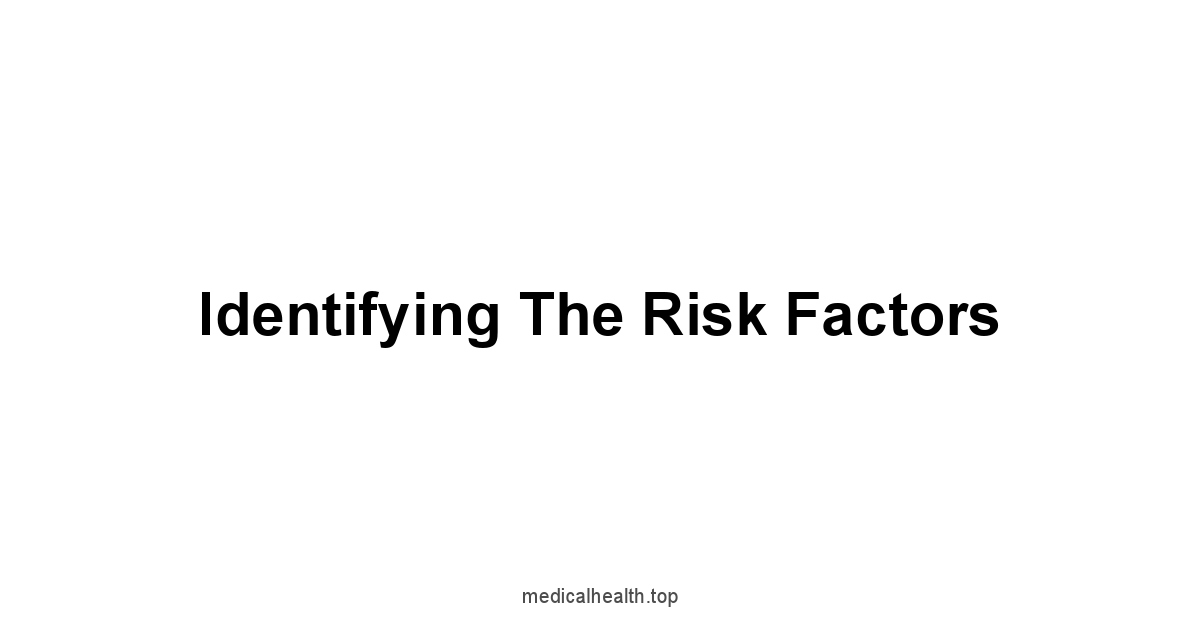
High blood pressure isn’t something that just happens out of the blue.
It’s a mix of factors, some you can change, and some you can’t.
Understanding these risk factors is crucial because it helps you identify what puts you at a higher risk.
It also gives you some control over what can be changed to mitigate these risks.
It’s like knowing what hazards lie ahead on a journey, it gives you the ability to prepare and navigate with greater safety and care.
It’s not just about avoiding a single cause, it’s about understanding a complex web of elements that can contribute to the development of hypertension.
This understanding helps you tailor your approach to manage your risk effectively.
It is a combination of genetics, habits, and underlying conditions, and understanding that makes a difference.
Age and Family History
Age is a risk factor, unfortunately, one we can’t change.
As we get older, our blood vessels tend to become less elastic, which can increase blood pressure. Family history is another big factor.
If your parents or siblings have high blood pressure, you’re more likely to have it, too.
This is because genes play a role in how your body regulates blood pressure, making you vulnerable to developing the condition.
It’s not a guarantee but a predisposition, and it should make you more vigilant about your health.
Here’s a look at the impact:
- Age: The risk increases significantly after age 50.
- Genetics: Individuals with a family history have a greater risk of developing high blood pressure.
- Race: Some racial groups, like African Americans, have higher rates of hypertension.
While you can’t change your age or your genes, knowing these factors allows you to be proactive.
If you have a family history of hypertension, or if you’re getting older, it’s even more important to monitor your blood pressure regularly.
It’s about being aware of what is not in your control, and focusing on what you can do to stay healthy, even with a genetic predisposition.
The Role of Diet and Lifestyle
What you eat and how you live has a massive impact on your blood pressure.
A diet high in salt, processed foods, and saturated fats can send your blood pressure soaring.
Being overweight or obese adds extra strain on your heart and blood vessels.
A sedentary lifestyle, without regular physical activity, makes you much more vulnerable.
These are things you can change and they can make a real difference.
Here’s how diet and lifestyle can influence your blood pressure:
- High Salt Intake: Increases blood volume, leading to higher pressure.
- Unhealthy Fats: Can contribute to plaque buildup in arteries, making them stiff.
- Obesity: Puts extra pressure on the heart and circulatory system.
- Lack of Exercise: Reduces the efficiency of the heart and blood vessels.
It’s not about making drastic changes overnight.
Small, consistent adjustments to your diet and activity levels can have a profound effect on your blood pressure.
This is about making choices that actively support your health and well-being.
It is important to make small, sustainable changes rather than trying to overhaul everything at once and failing.
Impact of Stress and Sleep
Stress, both chronic and acute, can have a significant impact on your blood pressure.
When you’re stressed, your body releases hormones that temporarily raise blood pressure.
If stress becomes chronic, the repeated spikes can lead to ongoing hypertension. Poor sleep also affects blood pressure regulation.
When you don’t get enough quality sleep, your blood pressure stays elevated, increasing your risk for hypertension.
It is not just a minor issue, but a significant factor in your overall health.
Here’s how stress and sleep impact your blood pressure:
- Stress: Activates the sympathetic nervous system, raising blood pressure.
- Lack of Sleep: Disrupts hormonal balance, leading to higher blood pressure.
- Poor Sleep Quality: Prevents the body from resting and repairing properly.
Managing stress through relaxation techniques, mindfulness, and engaging in hobbies, and making a commitment to getting good sleep are important to maintaining healthy blood pressure.
It is about being mindful of these factors and taking steps to address them in your life.
This shows that your mental and physical health are linked and you have to treat them equally.
Conditions that Increase Risk like Diabetes and Kidney Disease
Certain conditions can significantly increase your risk of hypertension.
Diabetes, especially type 2, is strongly linked to high blood pressure.
High blood sugar levels can damage blood vessels, making them more prone to hypertension.
Kidney disease can also lead to high blood pressure because the kidneys are crucial for regulating fluid balance and blood pressure.
The dysfunction of this system leads to the risk of hypertension.
Here’s how these conditions elevate the risk:
- Diabetes: Damages blood vessels, increasing the likelihood of hypertension.
- Kidney Disease: Impairs fluid and blood pressure regulation.
- Other Chronic Illnesses: Can worsen overall cardiovascular health.
Managing these underlying conditions is important for managing your blood pressure.
It’s not just about treating these conditions separately, but acknowledging how they influence each other.
It is vital to consider these factors while maintaining your health, keeping in mind that one issue can exacerbate another, and treating all of them to stay healthy.
Measuring Your Blood Pressure Correctly
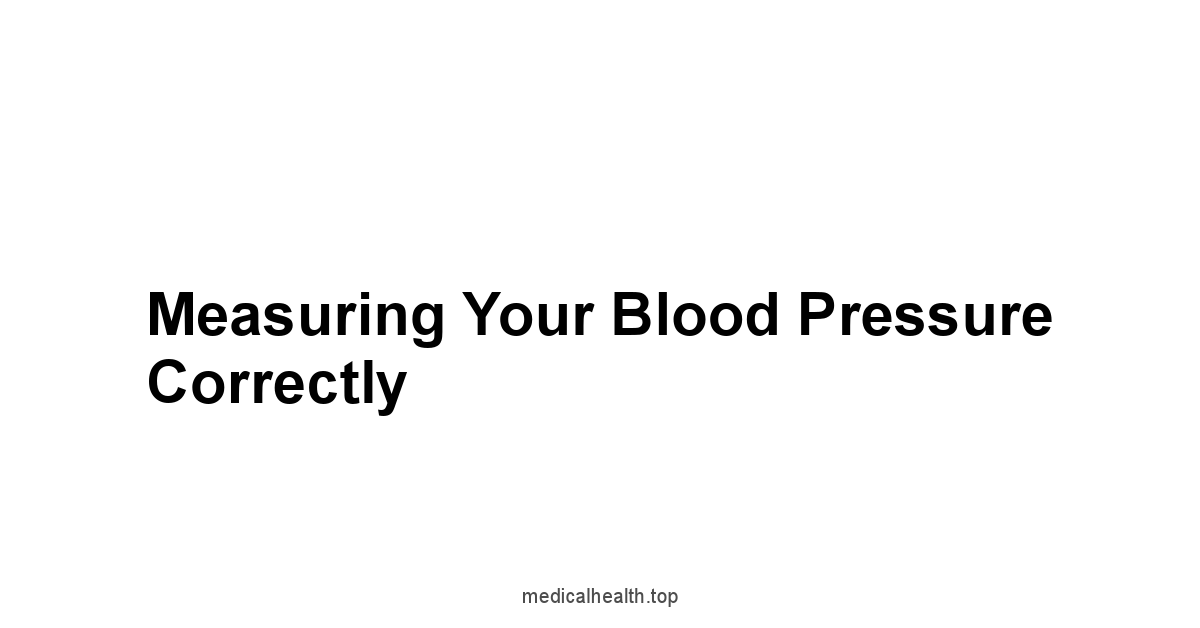
Monitoring your blood pressure is important.
It gives you real-time feedback on the condition of your cardiovascular system. You can’t manage what you don’t measure.
Regular, accurate readings are the best way to stay informed about your health.
This isn’t just something to do when you feel unwell, it’s a regular check-in on your well-being.
It’s a vital component of preventing long-term health problems.
Accurate blood pressure readings empower you to manage your health effectively and keep track of the success of your efforts.
It’s like having a map when you travel, it guides you through your health journey, and helps you course-correct if you get off track.
It is a way of taking control and staying informed about your health.
Using a Blood Pressure Monitor at Home
Home blood pressure monitoring is a must.
It gives you the ability to track your blood pressure from the comfort of your own home.
This is not just about getting one reading, it’s about understanding trends over time.
It is convenient, it reduces the stress of medical appointments, and it gives you much more data to work with. It is something to integrate into your routine.
Here’s why home monitoring is important:
- Convenience: Allows you to take measurements without visiting a clinic.
- Regular Monitoring: Gives you a more complete picture of your blood pressure trends.
- Reduced “White Coat” Effect: Less anxiety, more accurate results.
- Better Control: Empowers you to take an active role in your health.
Make sure you invest in a good quality home blood pressure monitor and get your doctor’s advice on which monitor to use.
Follow your doctor’s instructions on how to use it correctly. The goal is to have consistency in your readings.
This gives you the information you need to have better conversations with your doctor.
It is about being proactive and engaged in your health.
Taking Accurate Readings: Technique Matters
The technique for taking accurate blood pressure readings is crucial.
It’s not just about slapping on the cuff and pressing a button.
If you don’t do it correctly, your readings won’t be reliable.
Small errors can produce inaccurate data and that can be misleading.
This isn’t about being perfect, but about being consistent and careful.
Here’s a step-by-step guide to taking accurate measurements:
- Preparation: Rest for 5 minutes before the reading.
- Position: Sit with your back supported, feet flat on the floor, and arm at heart level.
- Cuff Placement: Place the cuff on your bare arm, above the elbow, according to the device’s instructions.
- Measurement: Take two to three readings, one minute apart, and record the average.
- Timing: Take readings at the same time each day for consistency.
Follow the directions that come with the device.
It’s also important to check that your blood pressure cuff is the correct size.
A cuff that is too small or too big can give you incorrect results.
Being attentive to detail can make all the difference in the reliability of your readings. It’s about taking the time to do it right.
Understanding Your Blood Pressure Chart
Understanding your blood pressure chart is important.
A chart isn’t just a bunch of numbers, it’s a visual representation of your health.
Tracking your readings over time allows you to see patterns and trends.
This helps you and your doctor better understand how your body is reacting to different treatments and lifestyle changes.
It is a method of tracking your health and seeing your progress over time.
Here’s how to use your blood pressure chart:
- Record Readings: Keep a log of your systolic and diastolic measurements.
- Track Trends: Look for patterns, both positive and negative changes.
- Share with Your Doctor: Take your chart to your doctor’s appointments.
- Identify Patterns: Note the times of day when your blood pressure is highest or lowest.

Your chart becomes a visual tool for monitoring your progress.
It is about getting involved in your care, and it also gives your doctor useful data for making decisions about your treatment.
This isn’t just a task, it’s a way of actively participating in your health.
Lifestyle Changes That Lower Blood Pressure

Lifestyle changes have a big impact on managing your blood pressure.
It’s not just about taking medicine, but making changes to your daily habits.
These changes are about more than just your blood pressure, they’re about your overall health and well-being.
It’s about building a healthier life, one good decision at a time.
It’s not a quick fix, it’s a long-term commitment to making healthy choices. It’s about taking responsibility for your health.
It is about making small adjustments every day that will add up to big changes in the long run.
It’s like planting a garden, it takes time and effort but the results are worth it.
The DASH Diet and Eating Habits
The DASH Dietary Approaches to Stop Hypertension diet is a plan designed specifically to lower blood pressure.
It focuses on whole foods, fruits, vegetables, lean proteins, and low-fat dairy, while limiting salt, saturated fat, and sugar.
It is not a restrictive diet, but a way to eat that improves your health.
This diet isn’t just about blood pressure, it’s about nourishing your body.
Here are key elements of the DASH diet:
- Fruits and Vegetables: Rich in vitamins, minerals, and fiber.
- Whole Grains: Provide sustained energy and fiber.
- Lean Proteins: Essential for muscle health.
- Low-Fat Dairy: A good source of calcium.
- Limit Salt, Saturated Fat, and Sugar: Reduce the risk of hypertension.
Eating healthy doesn’t have to be complicated.
By making small, consistent changes to your diet, you can have a big impact on your blood pressure.
It’s about making a conscious decision to choose foods that support your health and well-being.
It is a sustainable approach to eating well for your body.
Importance of Regular Exercise
Regular physical activity is important for keeping your blood pressure healthy.
Exercise strengthens your heart, helps you maintain a healthy weight, and improves blood flow.
It’s not just about intense workouts, any physical activity counts, even taking a daily walk. It’s about moving your body regularly.
Here’s what regular exercise can do for your blood pressure:
- Strengthens the Heart: Makes your heart more efficient.
- Improves Circulation: Keeps your blood vessels healthy and clear.
- Reduces Stress: Helps lower stress levels, which can lead to a decrease in blood pressure.
- Weight Management: Helps you maintain a healthy weight, reducing strain on your heart.
It is about moving your body every day and it can be anything from a brisk walk to something more intense.
Pick something you enjoy, and that will be a fun and active part of your life. It’s an investment in your long-term health.
Quitting Smoking and Limiting Alcohol
Smoking and excessive alcohol consumption are harmful to your blood pressure and your overall health.
Smoking damages blood vessels, making them stiff and narrow.
Alcohol, in excessive amounts, can also raise blood pressure and cause heart problems.
Cutting these bad habits is important for your health.
These are not minor lifestyle choices but critical factors in your overall well-being.
Here’s why quitting smoking and limiting alcohol is vital:
- Smoking: Damages blood vessels, increasing blood pressure.
- Alcohol: Excessive drinking can raise blood pressure and damage the heart.
- Improved Health: Overall physical health improves when smoking and alcohol are limited.
Quitting smoking is a big challenge but it’s worth it, for your health and well-being. If you drink alcohol, do it in moderation.
These are difficult habits to break, but you are protecting your health, and giving yourself the best chance of a long and healthy life.
It’s about taking control of your health and making the decision that will be better for you.
Stress Management Techniques: Mindfulness and Meditation
Stress is a major factor in high blood pressure.
Managing stress isn’t just about feeling better, it directly impacts your physical health.
Techniques like mindfulness and meditation can help you manage stress and lower your blood pressure.
It’s about taking time each day to calm your mind and relax your body.
Here’s how these techniques can help:
- Mindfulness: Focuses your attention on the present, reducing anxiety.
- Meditation: Promotes relaxation, lowering heart rate and blood pressure.
- Deep Breathing: Slows down the heart and nervous system, promoting calm.
It doesn’t have to be complicated or time-consuming.
Simple practices, like taking a few minutes to breathe deeply, can make a big difference.
Incorporate these practices into your daily routine.
It’s about finding ways to manage the stress of daily life and it can have a positive effect on your overall health.
Weight Management and its Impact on Blood Pressure
Maintaining a healthy weight is important for managing your blood pressure.
Being overweight or obese puts extra strain on your heart and blood vessels.
When you lose excess weight, your heart doesn’t have to work as hard, and your blood pressure decreases. It’s a direct relationship.
Here’s how weight loss affects your blood pressure:
- Reduces Strain: Less weight means less work for your heart.
- Improved Blood Flow: Weight loss can improve the function of blood vessels.
- Decreases Risk: Reduces your risk of other health issues associated with obesity.
It’s not about achieving a specific number, it’s about finding a healthy weight that works for you.
Combine a healthy diet with regular exercise, and be consistent with the efforts.
It’s about making changes that will help you achieve a healthy and sustainable weight.
It is about taking care of your body and protecting your health.
Medications for Hypertension
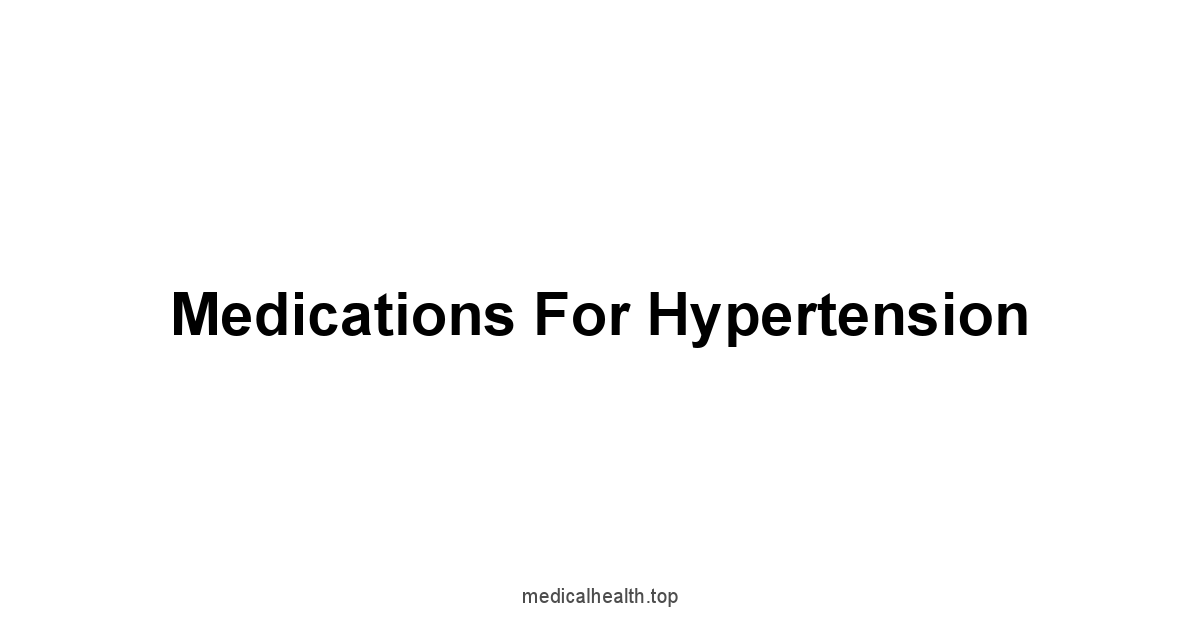
Sometimes, lifestyle changes alone aren’t enough to control high blood pressure. That’s when medication can be helpful. Medications aren’t a failure on your part.
They are tools that can help you take care of your health.
Understanding your options, what they do, and working with your doctor are all important.
Medication is not a cure, but a way to manage your blood pressure.
This doesn’t mean you should stop focusing on lifestyle changes.
Combining medication and lifestyle changes is the best approach to managing your health.
The goal is to keep your blood pressure within a healthy range, and medications are one way to do that.
Types of Antihypertensive Drugs: Diuretics
Diuretics, often called “water pills,” help your kidneys remove excess salt and water from your body.
This reduces the amount of fluid in your blood, lowering blood pressure.
They are often the first medication prescribed for high blood pressure, and they help with a number of issues.
Here’s how they work:
- Increased Urination: Helps the body get rid of excess fluid and salt.
- Reduced Blood Volume: Less fluid in the bloodstream means less pressure on the vessel walls.
- Common First-Line Treatment: Often used as the first medication prescribed for hypertension.
Diuretics are a great way to help your body balance salt and water, which lowers your blood pressure.
Your doctor will determine if this is the right treatment for you.
It is important to understand the medication and its effects on your body.
It is essential to discuss any concerns with your doctor.
Types of Antihypertensive Drugs: ACE Inhibitors
ACE Angiotensin-Converting Enzyme inhibitors work by blocking a hormone that causes your blood vessels to narrow.
This helps your blood vessels relax and widen, lowering your blood pressure.
They are effective at reducing blood pressure, and they can also help protect your kidneys.
Here’s how ACE inhibitors work:
- Blocks Hormone: Prevents the blood vessels from narrowing.
- Relaxes Blood Vessels: Allows for easier blood flow.
- Protects Kidneys: Can be helpful for individuals with kidney issues.
This medication is another tool to help your body relax, and it can have a positive impact on your blood pressure and overall health.
It is important to understand your medical history so you can have productive discussions with your doctor.
It is vital to remember that these medications require ongoing monitoring by your doctor.
Types of Antihypertensive Drugs: Beta-Blockers
Beta-blockers slow down your heart rate and reduce the force of your heart’s contractions.
This makes your heart pump less forcefully, which lowers your blood pressure.
Beta-blockers can also be used to treat other heart conditions.
Here’s how beta-blockers work:
- Slows Heart Rate: Reducing the speed at which your heart beats.
- Reduces Heart Contractions: Weakening the force of each heartbeat.
- Lowers Blood Pressure: Decreasing the pressure in the arteries.
Beta-blockers are useful in helping your heart beat more efficiently, and they help with reducing your blood pressure.
Each medication is different and you need to discuss your history with your doctor.
You should keep your doctor informed of any side effects, or negative reactions.
It is a joint process and you are a key participant in that process.
When Medication is Necessary: Working with Your Doctor
Deciding if medication is needed isn’t something you should do on your own.
It’s important to work with your doctor to determine if medication is necessary, or whether a change in medication is needed.
They will review your health, your blood pressure readings, and your overall risk factors.
It’s about making the right decision for you and your health with the help of your doctor.
Here’s how to work with your doctor:
- Share Readings: Provide your doctor with your blood pressure logs.
- Discuss Concerns: Talk to your doctor about any worries you may have about medications.
- Follow Recommendations: Take medication as prescribed, but also address the lifestyle changes that your doctor may recommend.
- Open Communication: Work together to make the best decision for your health.
It’s a team approach.
You bring your concerns and measurements, and your doctor brings the knowledge and the medical expertise.
Your doctor will be key in your medical decisions, they will monitor your health, and make adjustments to your treatment when necessary.
Monitoring Your Medications and Side Effects
Taking medication is important, but it’s not the end of the process.
Monitoring your medications and any side effects is an important part of your overall care.
If you experience any side effects, tell your doctor right away.
It is crucial to keep track of how you are feeling, and your readings, while taking medications.
Here’s how to monitor medications and side effects:
- Regular Check-ins: Visit your doctor to ensure medications are working correctly.
- Report Side Effects: Immediately inform your doctor if you experience any unexpected reactions.
- Track Blood Pressure: Keep a record of your blood pressure readings to assess the effectiveness of your medication.
- Medication Log: Keep track of what you are taking and when.
You are the one who is experiencing the side effects, and reporting is an important part of your overall care.
Your doctor can adjust your dosage or change medications, if necessary.
It is all about being proactive and working with your doctor to keep your health at its best.
Living Well with Hypertension
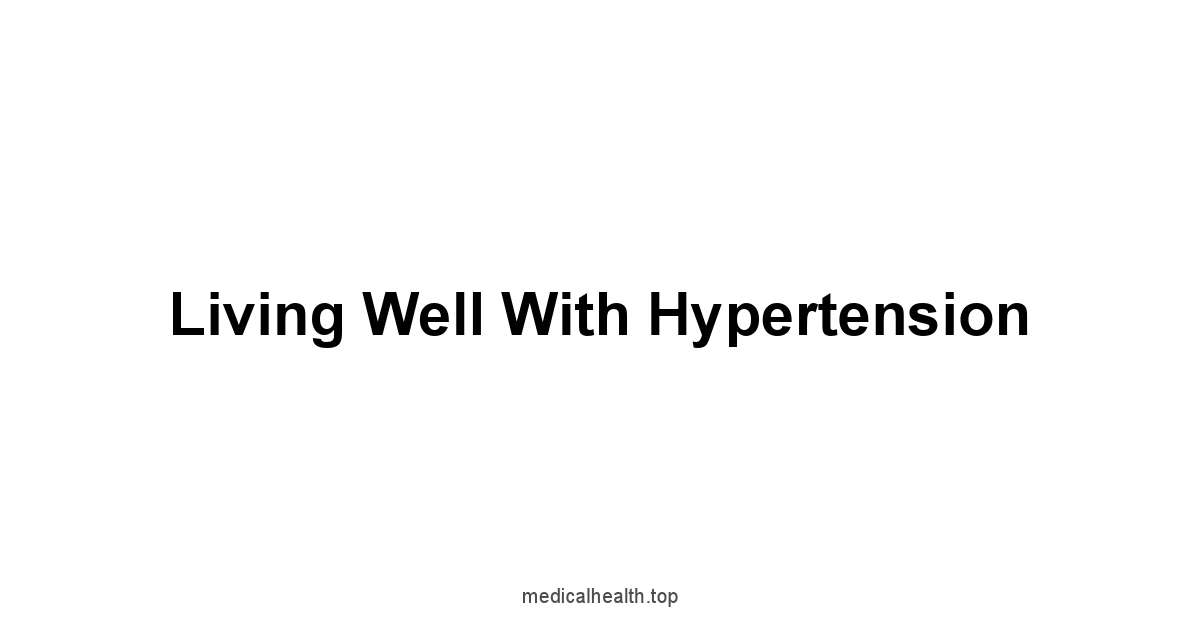
Living with hypertension is not a life sentence.
It requires making some changes, being diligent, and staying active in your own care.
It’s about taking control of your health and living life to the fullest, despite your diagnosis.
It’s not just about managing blood pressure, it’s about living well.
It’s about commitment to your health and taking care of your body and mind.
Living well is about more than numbers, it’s about feeling good, having energy, and enjoying your life.
It is not about letting hypertension control you, it’s about living your best life and taking care of yourself.
Regular Check-ups and Doctor Visits
Regular check-ups and doctor visits are important for managing your blood pressure.
These visits provide an opportunity for your doctor to monitor your health, assess your treatment, and make any necessary changes.
You are working together to stay on top of your health and keep your blood pressure within a healthy range.
Here’s why regular check-ups are important:
- Monitoring Progress: Helps track the effectiveness of your treatment plan.
- Adjusting Medications: Allows for necessary changes in medication or dosage.
- Detecting Problems: Early detection of other health issues.
- Guidance and Support: Provides an opportunity to discuss concerns and questions with your doctor.
It is not just about addressing a problem when it appears, it is about proactively working to keep your health on the right track.
Regular visits are a critical part of your management of your hypertension.
It is a partnership between you and your doctor, with the common goal of your long-term health.
Tracking Your Blood Pressure at Home
Tracking your blood pressure at home is a critical part of managing hypertension.
It gives you the data you need to understand your health on a daily basis.
It allows you to be an active participant in your health, and it gives you valuable information to share with your doctor.
It is all about being an active participant in your health management.
Here’s why home tracking is important:
- Consistent Monitoring: Provides a complete picture of your blood pressure trends.
- Empowers You: Gives you control over your own health management.
- Helps with Treatment: Offers data for adjusting medications or lifestyle changes.
- Early Detection: Can identify sudden or gradual changes in blood pressure.
Home tracking is not a substitute for medical visits but a tool to help you understand your health better.
By consistently measuring your blood pressure you are becoming more aware of your health and changes that might affect your well-being. This helps you stay on top of your health.
Creating a Support System
Having a support system can be a great help when managing hypertension.
Talking with family, friends, or support groups can provide you with encouragement, understanding, and motivation. You don’t have to go through this alone.
Support makes a difficult task much easier, and you feel more empowered to keep going.
Here’s why support is important:
- Emotional Support: Helps you deal with the challenges of managing a chronic condition.
- Accountability: Encourages you to stick with lifestyle changes and medications.
- Shared Experiences: Provides opportunities to connect with others who understand what you’re going through.
- Motivation: Keeps you inspired to stay on track with your health goals.
A good support system helps you feel connected, and it makes you feel less alone.
It gives you the ability to share and grow, and you are all working toward the goal of better health.
You can use your support system to become better, and keep going, through the ups and downs of life with hypertension.
Long Term Management: Staying Committed
Managing hypertension is a long-term commitment, it is not something that goes away.
It is about continuing to follow your treatment plan, making healthy choices, and staying consistent.
It is about making lifestyle changes, taking medication as prescribed, and staying engaged with your health. It’s a continuous journey, not a destination.
Here are key elements of long-term management:
- Consistency: Stick to your medication schedule and lifestyle changes.
- Adaptability: Be ready to adjust your treatment plan as needed.
- Persistence: Don’t give up on managing your health.
- Self-Care: Take care of your mental and emotional well-being.
It’s about staying the course, and making choices that keep you healthy for the long run.
It is all about long-term health and being your best self for years to come.
You are taking care of yourself for the future and you will get the results from being dedicated to your health.
Final Thoughts
So, there it is.
Hypertension, or high blood pressure, is a serious condition, but it’s not a mystery.
It’s a complex interplay of numbers, risk factors, and lifestyle.
Understanding it is the first step, not to scare you, but to empower you.
We’ve talked about the silent way it damages your body, the risk factors you can’t change, and those you can.
We’ve looked at the numbers, what they mean, and how to measure them accurately. Remember, these numbers aren’t abstract concepts.
They represent the real pressure against your artery walls, and they have a real impact.
About 47% of adults in the United States have hypertension, according to the CDC, so you’re not alone in this fight.
We’ve covered the lifestyle changes that make a difference, from the food you put on your plate to the way you move your body, and the importance of calming your mind.
We’ve explored the role medication plays, and how to work with your doctor to determine the best path for you.
It’s about taking charge, making informed choices, and building a healthier life one day at a time.
The good news is that high blood pressure is controllable, with awareness, consistent effort, and the support of your doctor and loved ones.
It requires commitment and it needs to be a consistent commitment to your overall health.
It’s about more than just numbers, it’s about living well.
It is about making a conscious decision to protect yourself from the long-term effects of hypertension.
Stay vigilant with your regular check-ups, doctor visits, and home monitoring.
They are not a burden but tools that help you stay on track.
Find your support system, a community that understands and encourages you in the journey.
Remember, managing hypertension is a marathon, not a sprint. Consistency is the key. It’s not about perfection, it’s about progress. You’ve got this.
So, stay informed, stay active, and stay committed to your health.
It is a journey and you have the tools to make that journey successful.
This is not the end, it’s the beginning of your work toward a healthier you.
Keep track of your readings, make the lifestyle changes, and remember you’re not alone in this. Your health is worth the effort.
Go forward with that in mind, and know you are taking control of your health and your future. Be well, and take care of yourself.
Frequently Asked Questions
What exactly is hypertension?
Hypertension is when your blood pressure is too high, it’s not about being stressed.
It’s a constant force that strains your arteries, making your heart work harder. It’s a condition that needs attention.
What do the numbers mean when measuring blood pressure?
The numbers are systolic and diastolic. Systolic is when your heart beats. Diastolic is when it rests.
Normal is about 120/80. Over 130/80, you need to pay attention. It’s not a pass-fail, but a range to monitor.
How does high blood pressure harm my body?
High blood pressure damages your arteries, your heart, your brain, kidneys and eyes.
It’s like a constant leak in the pipes, leading to bigger problems down the road. It’s a serious threat, not a minor inconvenience.
Why is hypertension called the “silent killer”?
It’s silent because you often don’t feel it.
You might feel fine, but the damage is still happening.
Regular checks are needed, don’t wait for a crisis to realize something’s wrong.
What are the risk factors for high blood pressure?
Age, family history, diet, lifestyle, stress, and sleep all play a role.
Conditions like diabetes and kidney disease also increase risk. It’s not one thing, it’s a mix.
Understanding these risks helps you know what you need to change.
Can I do anything about the risk factors?
You can’t change your age or family history, but you can change your diet and how active you are.
You can also get your stress under control and make sure you’re sleeping well. It’s about control of what you can change.
How can I measure my blood pressure accurately at home?
Use a good home monitor.
Sit still, back supported, feet flat on the floor and arm at heart level. Take a few readings and average them. Be consistent in your routine.
What are the basics of using a blood pressure chart?
A chart is a way to track your health.
Record your readings, note any trends and bring the chart to your doctor.
It’s not just numbers, it’s a visual tool for managing your health.
What is the DASH diet, and how can it lower my blood pressure?
The DASH diet is about eating whole foods, fruits, vegetables, lean proteins, and low-fat dairy, while limiting salt, saturated fat, and sugar.
It’s about nourishing your body, not just avoiding certain foods.
How important is exercise in managing high blood pressure?
Exercise is crucial.
It makes your heart stronger, helps blood flow and helps control weight. Any movement counts, just keep moving.
It’s a long term investment in your overall health and well-being.
What role do smoking and alcohol play in hypertension?
Smoking damages your blood vessels. Too much alcohol raises blood pressure. Quitting smoking and limiting alcohol is a must.
Your long term health is more important than bad habits.
Can mindfulness and meditation help lower my blood pressure?
Yes, they can.
Stress raises blood pressure, mindfulness and meditation helps your mind relax and calm your body. Even a little bit helps. It’s a crucial part of your overall health.
If I am overweight, how will weight loss affect my blood pressure?
Losing weight means less work for your heart, and your blood pressure will go down.
It’s a direct relationship between your weight and your blood pressure. It’s about finding a healthy weight for your body.
When should I consider medication for my hypertension?
Sometimes lifestyle changes aren’t enough and your doctor may consider medication.
It’s a tool to help you manage your blood pressure, not a failure.
Work with your doctor to determine the correct treatment for you.
What are diuretics, and how do they help with blood pressure?
Diuretics remove excess salt and water from your body.
This reduces the amount of fluid in your blood, and that lowers your blood pressure. They’re a way to help your body balance itself.
How do ACE inhibitors work to lower blood pressure?
ACE inhibitors stop your blood vessels from narrowing, making them relax.
This helps with blood flow and lowers your blood pressure. It’s another tool for helping your body.
What do beta-blockers do to manage high blood pressure?
Beta-blockers slow down your heart rate and make it beat with less force. This lowers your blood pressure. They help your heart beat more efficiently.
How do I know if I should start taking medication?
Work with your doctor.
Share your readings, discuss any concerns, and follow their recommendations.
It’s a team effort between you and your doctor to make the best decisions for your health.
Why do I need to monitor my medications and any side effects?
Monitoring is vital. If you experience side effects, tell your doctor.
You need to be aware of the effects of the medications you are taking. Your health is a continuous process.
Is living with hypertension a life sentence?
No.
It requires lifestyle changes, diligence, and active participation in your care, but it’s about living well.
It’s about taking control of your health, not letting your health control you.
Why are regular check-ups with my doctor important?
Regular check-ups allow your doctor to monitor your health, make any necessary changes and provide you with guidance and support. It’s about being proactive.
How does tracking my blood pressure at home help?
It gives you data, allowing you to be active in your care and to share information with your doctor.
It allows you to see trends, and understand your body better.
Should I have a support system for managing hypertension?
Yes. Talk to family, friends, or support groups.
It gives you encouragement, understanding, and motivation. You are not alone in this journey.
What is involved in the long-term management of high blood pressure?
It’s about consistency.
Stick to your plan, make healthy choices, and stay engaged. It’s a continuous journey. Stay committed to your long term health.
